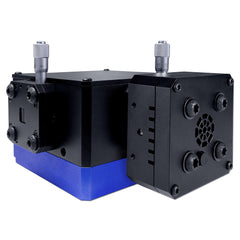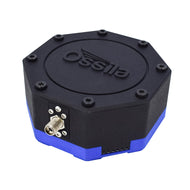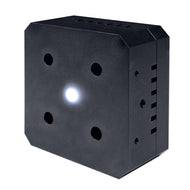Tunable LED Light Source
Lab Equipment, SpectroscopyHigh Powered Monochromatic Light Tunable to <1 nm Accuracy
Low price variable LED light source for custom spectroscopy setups
Overview | Why Use LED? | Specifications | Gallery | Tunable Light Sources vs. Lasers | Related Products
A compact and affordable option for sourcing variable monochromatic light between 380 and 1000 nm to <1 nm accuracy. Designed for custom spectroscopy setups, the tunable light source combines a high-power broadband LED light source and grating monochromator.
Easily controlled via the free software or through simple serial commands. Adjust the wavelength to match the properties of your sample for absorbance and fluorescence measurements that require specific excitation and scan rapidly (up to 1000 nm/s) across the visible spectrum to find excitation maxima or measure accurate spectra every time.
Compatible with standard optical rail systems, integrate into your optical setup and start measuring with reliable monochromatic light.
Compact Size
Easily integrate into your setup while saving space
on your optics bench
Easy to Use
Control with our free and intuitive software or use
serial commands
Wide Wavelength Range
380 – 1000 nm range tunable to <1 nm accuracy with 1000 nm/s scanning speeds
Low Price
Built on our low price monochromator for affordable high performance
Why Use LED?
In spectroscopy, researchers often use Tungsten, Xenon or Deuterium-Tungsten lamps for tunable light sources. Most of these lamps behave approximately as black body radiators (except for Deuterium which relies on molecular emission). This produces a broad and consistent output across the visible spectrum. However, they also require a significant warm up time to reach thermal and intensity stability.
These lamps also:
- Have limited lifetimes
- Require frequent replacement
- Contain hazardous materials
- Introduce potential explosion risks
LEDs are often used for narrow-band emission, but can also be used in broadband light sources. By combining different wavelength LEDs, using optical mixing components or phosphors to blend or shift the output, LEDs can create output over a wide wavelength range.
LED light sources have a significantly longer lifetime than most bulbs, are less hazardous and have minimal warm-up or cool down time. This means LEDs are less expensive to maintain and easier to handle. Broadband LED emission output will not be as flat as the other lamps. However, they can still be powerful and broad enough to span across the visible region and further.
LED Tunable light Sources offer longer lifetime, less maintenance and a lower cost than other tunable light sources. They would make a great addition to any versatile lab.
Specifications
| Wavelength Range | 380 nm – 1000 nm |
|---|---|
| Wavelength Accuracy | <1 nm |
| Wavelength Repeatability | <0.1 nm |
| Optical Power Output | > 100 mW |
| Focal Length | 100 mm |
| f Number | f/4 |
| Configuration | Crossed Czerny-Turner |
| Slit Type | Manual |
| Possible Slit Sizes | 50 μm – 6 mm (W) x 10 mm (H) |
| Weight | TBC |
| Dimensions (W x D x H) | TBC |
Product Gallery
Tunable Light Sources vs. Lasers
Tunable light sources and single-wavelength light sources (such as lasers or single-wavelength LEDs) can be used for similar functions in spectroscopy. For example, they are often used as excitation sources for fluorescence experiments. However, there are some discernible differences that can help you choose between them.
Tunable light sources offer greater flexibility than single-wavelength light sources. You can adjust the output wavelength to 1 nm precision over a wide spectral range. This maintains the specificity of a single-emission source, with the range of a broadband light source.
This feature is valuable in any research environment where users study different materials or conduct varied experiments, requiring different excitation frequencies.
Single-wavelength sources emit light at a fixed wavelength. These systems provide higher power than tunable light sources, making them suitable for applications that need strong, consistent illumination at a specific frequency. These can be better choices for measurements requiring single consistent excitation, such as fluorescence microscopy.
Related Products








